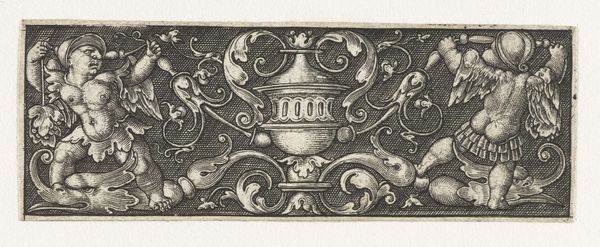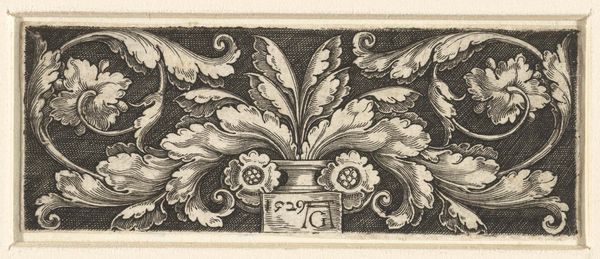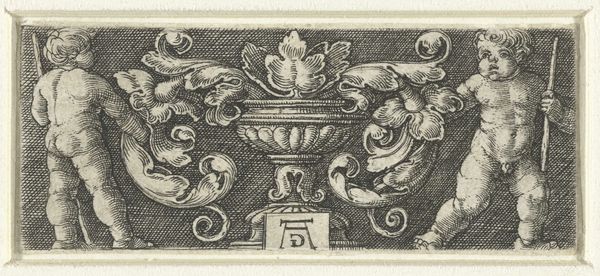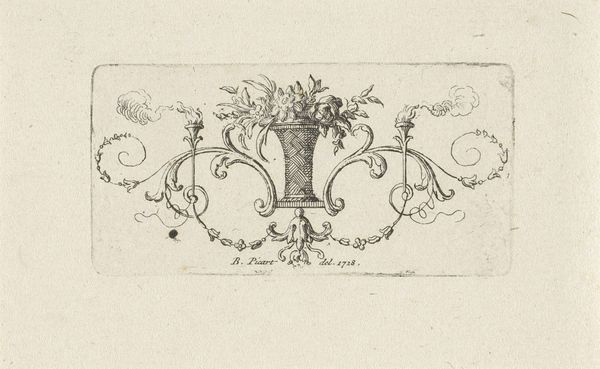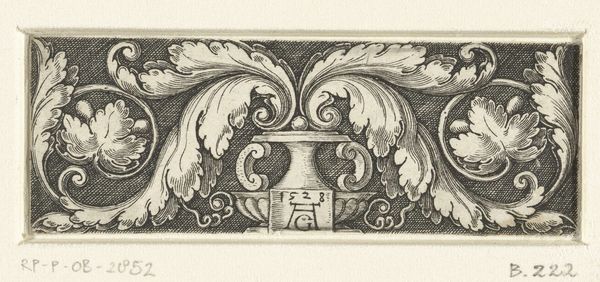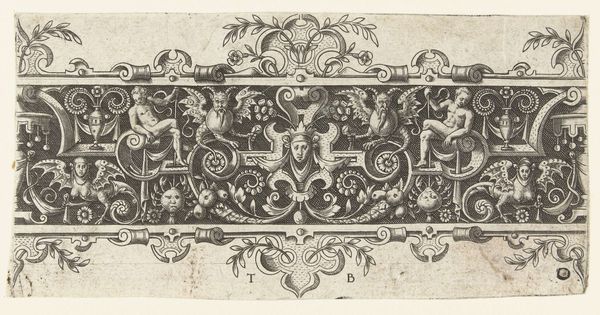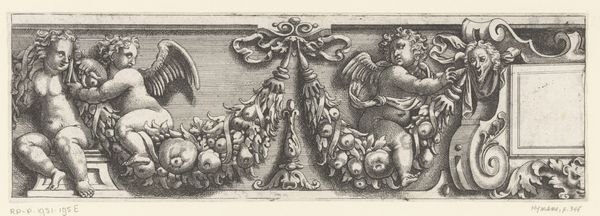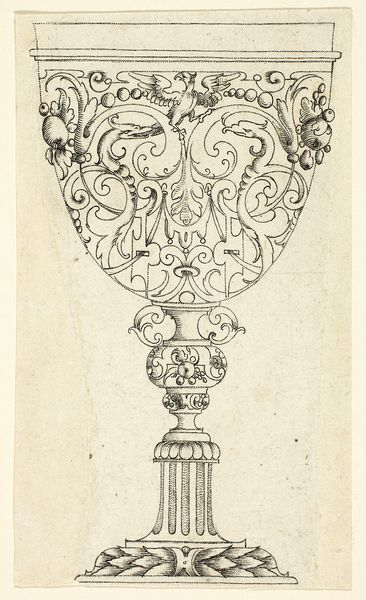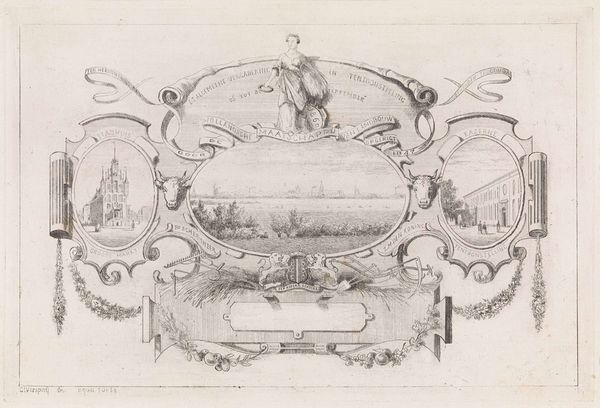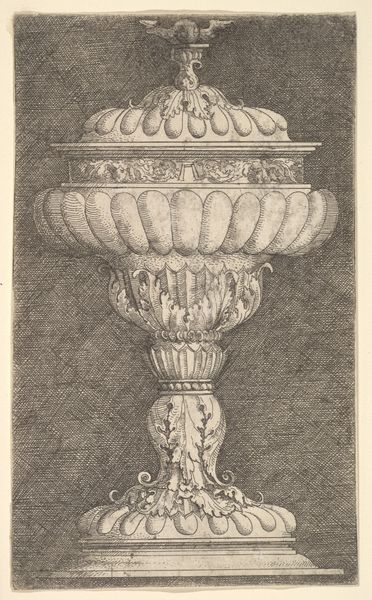
print, metal, engraving
#
allegory
# print
#
metal
#
mannerism
#
figuration
#
decorative-art
#
engraving
Dimensions: height 27 mm, width 78 mm
Copyright: Rijks Museum: Open Domain
Curator: At first glance, the tightly interwoven shapes and lines in this engraving offer a somewhat daunting puzzle of visual information. Editor: The work before us, dating roughly from 1521 to 1590, is titled "Fries met vaas tussen twee putti met een helm", which translates to "Frieze with vase between two putti with a helmet", and it's attributed to the Monogrammist AC. Curator: What strikes me immediately is the density, but also how balanced and contained it is. There’s almost a deliberate attempt to fill every single available space within the frame, creating this intense, almost claustrophobic sensation. Editor: Considering its decorative intention, the compactness likely aligns with a Mannerist sensibility where artificiality and ornamentation were prized above naturalistic representation. The central vase motif and flanking putti, typical of the period, are rendered with extraordinary detail via engraving on metal. Think about the cultural understanding of a helmet, what did it represent during that time, what did it mean for this symbol to be elevated as opposed to kept on the ground for soldiers. Curator: Yes, the vase certainly acts as a formal anchor for all the decorative elements—the winged putti, scrolls, and masks. Semiotically, vases speak of holding and preserving – knowledge, perhaps? What do you read in this imagery, especially with the helmet? Editor: The helmet certainly draws attention as these putti aren’t usually depicted in this manner. Allegorically, they may reference power, protection or military prowess, offering a symbolic layer that speaks to ideas of idealized masculine virtues through these youthful, angelic forms. Consider the context. Perhaps it speaks of how societies build structures, vessels even, to both protect and preserve themselves and their value systems. Curator: The cross-hatching creates depth and dimensionality while accentuating contours and textures within this visual story, this tale of power and cherubic protection. One can almost envision this design being transferred onto another material, perhaps metalwork or textile. Editor: That's perceptive. Thinking about continuity and memory, these symbols— the vase, putti and helmet — have been repeated across centuries. This illustrates our need for defense and the human connection to symbols as power or guidance. The frieze form reinforces that impulse for unending symbolic reiteration. Curator: Absolutely, a constant cycle of protection, decoration and strength rendered permanent within a finite space. Editor: These recurring motifs and art elements—echoed even to our present day—provide a window into cultural understandings and historical narrative.
Comments
No comments
Be the first to comment and join the conversation on the ultimate creative platform.

